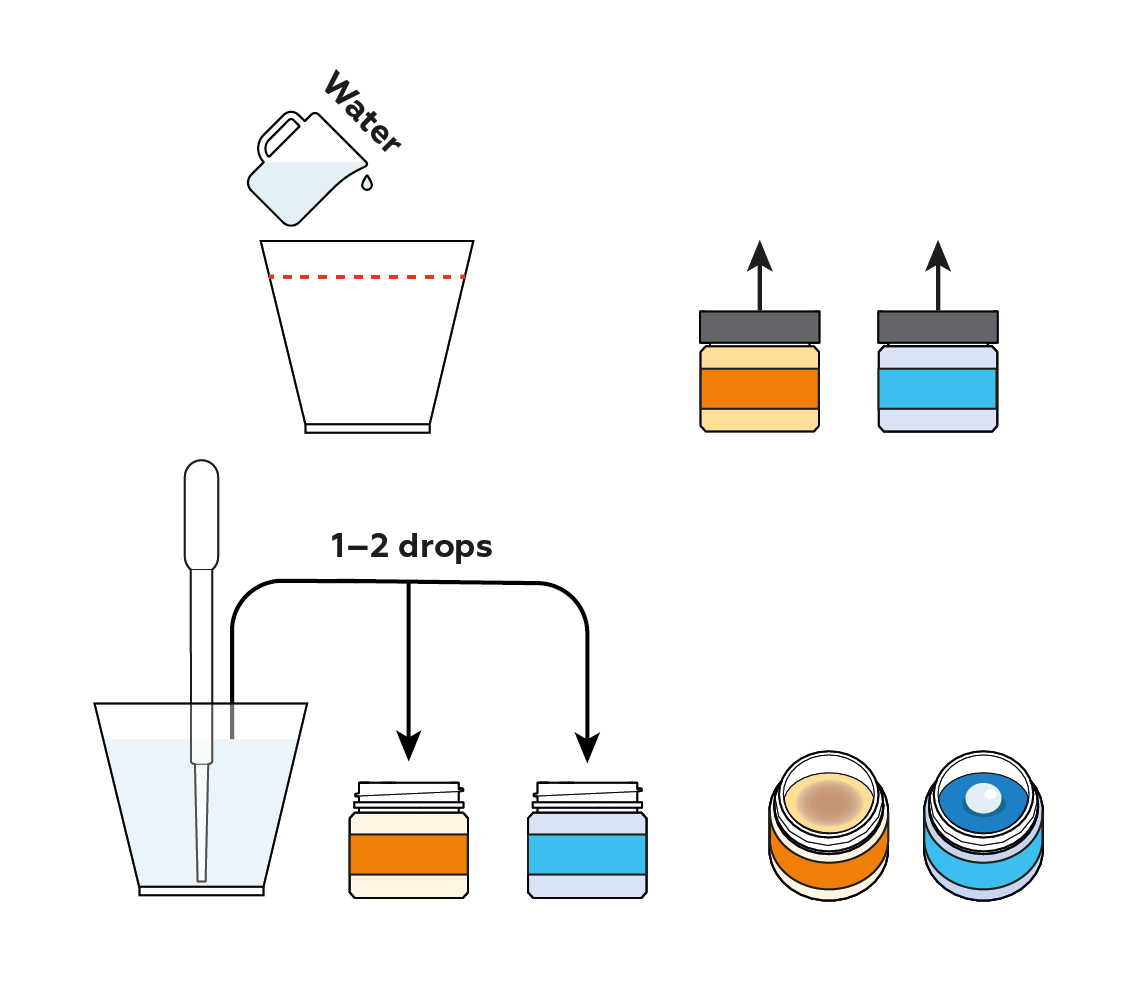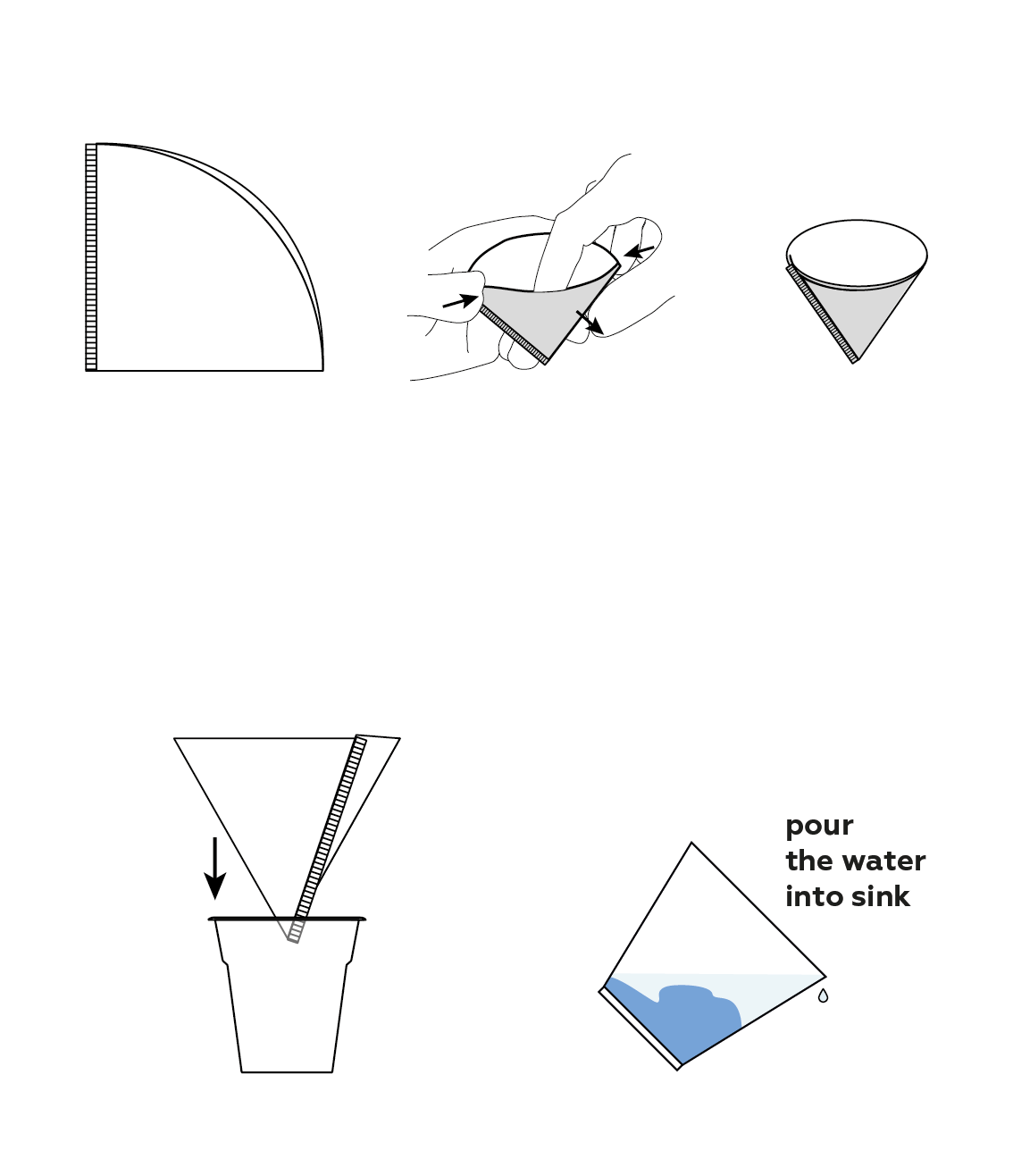Hydrophobic sand
Sand that doesn’t get wet in water!
Safety
- Carefully review the general safety advice on the back of the box cover before starting the experiment.
- Perform the experiment on the safety tray and use protective gloves to avoid staining your hands.
- Never eat or drink any of the substances provided. Do not use for culinary purposes.
Step-by-step instructions
Use the waterproof underlay to keep your table dry. You’ll be using the large square cups for this experiment.

A crumbly substance like sand can also be made hydrophobic! While regular sand gladly allows water into the gaps between its grains, hydrophobic sand doesn’t absorb water. Water’s presence in sand changes its properties.

Your special sand remains dry and crumbly even when immersed in a glass of water—it retains some air within its mass and on its surface!

Some water can permeate even into materials with very weak wetting properties. Still, water evaporates from hydrophobic sand much faster than from regular sand.


Disposal
- Dispose of solid waste together with household garbage.
- Pour liquids down the sink. Wash with an excess of water.
Scientific description
If you’ve ever built a sandcastle, you’ll know that dry and wet sand have very different properties. Dry sand crumbles, while wet sand sculpts well.
Sand consists of many visible grains . When dry, the grains
do not cling to each other and are easy to sift between your fingers. When wetting ordinary sand, water
fills the voids between the grains
. The water molecules
are attracted to the molecules of the grains
and to each other; thus, the water
binds
the grains
together, creating a material perfect for modeling.
Hydrophobic sand consists of grains coated with a special substance
that repels water molecules
. On the surface of this sand
, a water droplet
behaves the same as on hydrophobic fabric. When you pour hydrophobic sand
into a glass of water, it doesn’t settle evenly at the bottom, but forms bizarre shapes. Its surface becomes covered with air bubbles
: as it sinks, each grain of sand
pulls the surrounding air
with it, forming a bubble in the water.
Even though the water does not penetrate between individual grains
, the sand does not scatter in the water; it behaves the way wet sand
does in the air. Amazingly, the sand emerges from the water completely dry!
That’s interesting!
Hydrophobic surfaces aren’t exactly a secret technology available exclusively to scientists in laboratories. The leaves of some plants have a super-hydrophobic surface, too! This explains why drops of water sometimes instantly turn into small balls and roll off of the leaves they’ve fallen on, cleaning away any dirt.